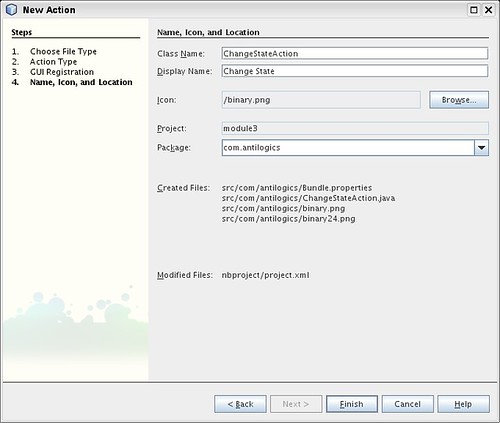

Java gives you a more dynamic option with a property resource bundle implementation that's separated from the mainline application code.
#Netbeans plateform windows
In the Windows world, you edit a resource file, and then compile that with a resource compiler.

If you go to places like India, for instance, with all sorts of languages spoken there, localization is hugely important.
#Netbeans plateform software
Depending on what kind of software you're writing, localization is either very important to you, or not important at all. Localization is another issue you have to consider when designing a UI. It solves at a deep level the Java-app-as-alien myth, and makes it easy to develop things that look right everywhere. But when you move the application to a different platform, the layout manager is going to use the spacing that that platform's design guidelines recommend, and Swing will use the correct borders and font. It will snap components in place for you. When you're designing your UI, Matisse will give you guidelines on using the recommended positioning for whatever platform you're designing on. Matisse does its work by interacting with GroupLayout. Among other things, GroupLayout handles spacing very nicely, always taking into account the platform you execute the software on. GroupLayout makes that really easy.Ĭontrast that with other layout managers that require that all of the components be on a grid, with one component occupying two cells, and another one occupying one. But if you put the JButton and the label next to each other, you want them to share a common baseline, because it's provable that people read faster and are able to understand it if the eye can follow a straight line. Taken individually, a JLabel with some text is of a different height than a JButton with text is. GroupLayout lets you specify that certain components on a form have some kind of a relationship to each other, such as a positioning relationship or an alignment relationship.įor instance, consider aligning two components. GroupLayout is being developed as a project on, and it will be a core part of Swing in JDK 6. We attempted to abstract all that complexity out into a new layout manager, GroupLayout. At the same time, everyone has a slightly different take on what looks right on a platform, such as how far from the edge of a window you should put a label, for instance. UI standards are a great thing, because they make things look familiar to users. Apple has them for the Mac, Microsoft has them for Windows, and there is the Java Look And Feel Guidelines. There are user interface design guidelines for every platform. Tim Boudreau: Java UIs are interesting because of the requirement to work well on multiple platforms. In the concluding segment of this interview, Boudreau talks about the NetBeans platform, GroupLayout, the Matisse GUI builder, and NetBeans' support for languages other than Java.įrank Sommers: At JavaOne 2006, you demonstrated Matisse, the NetBeans 5.5 graphical user-interface editor, and said that Matisse is really a different kind of UI editor from anything that came before it. In the second installment of his interview with Artima, NetBeans evangelist Tim Boudreau talks about the NetBeans rich-client platform, how the NetBeans Matisse UI builder and GroupLayout layout manager address the challenges of cross-platform and internationalized UI design, and about support for languages other than Java in NetBeans.įollowing the NetBeans project's release of the 5.5 beta of its open-source IDE, Artima spoke with NetBeans evangelist Tim Boudreau about NetBeans 5.5, as well as future directions of the IDE.


 0 kommentar(er)
0 kommentar(er)
